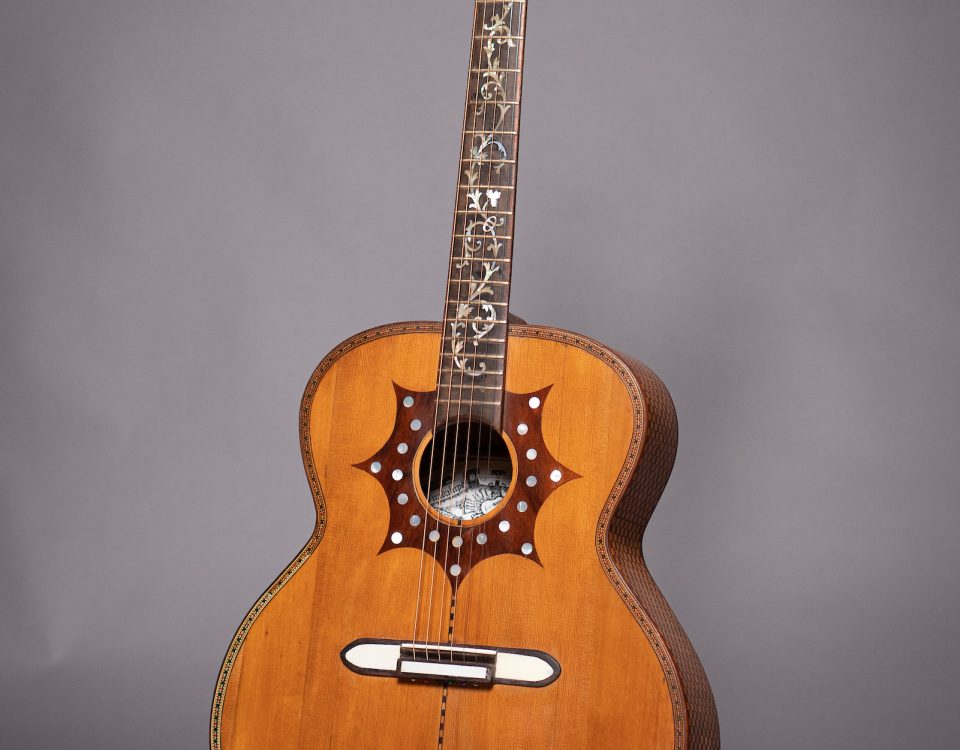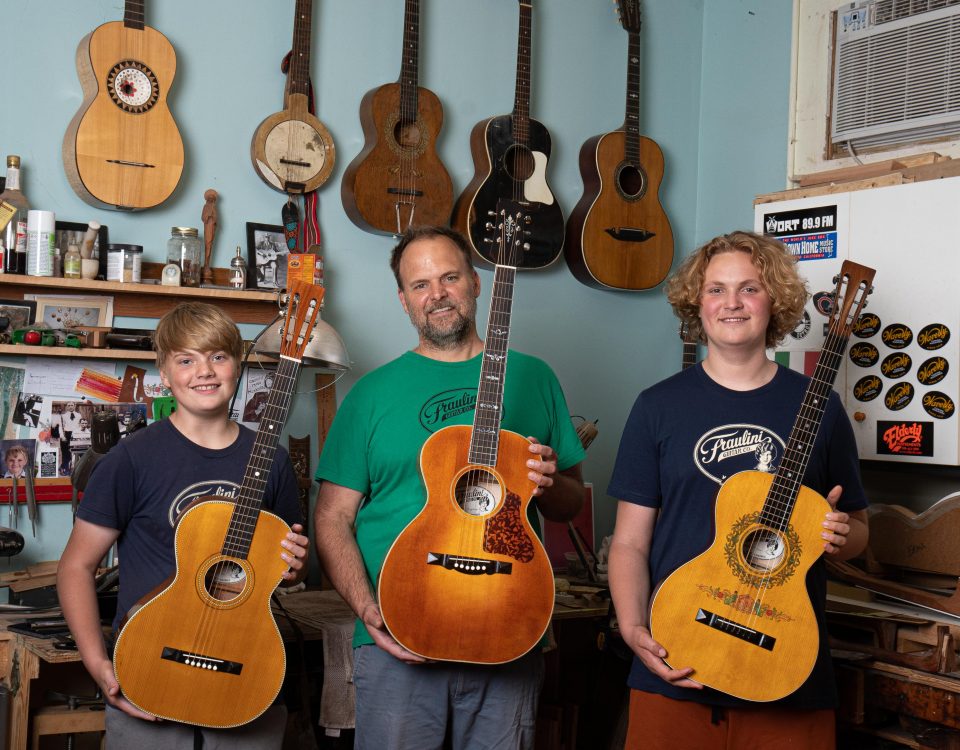Tis the Season to Humidify
This post may be a little late, but it’s better late than never. This is the time of year that you really need to pay attention to your instruments. As winter settles in and the air dries out, it is very important to humidify your guitar(s).
Most guitar makers keep their shops at around 40%-50% relative humidity. Guitars built under these conditions will handle extremes on both ends of the humidity spectrum the best. That’s not to say that they can survive unscathed. As humidity goes up, wood expands, which can cause glue joints to pop loose and wood to pucker. As humidity goes down, wood shrinks and things crack. Neither one is good, but drops in humidity are usually a bigger concern, especially during this time of year, when many of us live in cold climates and keep a heater going in our home. With a forced air furnace set at 70 F, humidity can drop below 15%, which is almost guaranteeing that your guitar will crack.
Your guitar will usually send you some signs that it is getting dry before it cracks. The first sign is that the fret ends start sticking out. This happens because the fingerboard is drying out and shrinking, but the metal frets aren’t, so the ends will feel rough on the edge of the fingerboard. If you get a second sign that things are getting dry, it may be some buzzing that wasn’t there before as your action will start to drop. I wouldn’t wait for any second signs, I’d start to humidify the guitar as soon as I felt the fret ends poking out.
For maintaining humidity there are several methods. You need to figure out which one will work best for you. It’s good to start with a humidity gauge so that you can tell what sort of results you’re having. Because I have several instruments in the home and shop, I keep a room humidifier going in the shop and one in the house, in the room where I keep instruments. I set it so that it maintains 40% humidity. These humidifiers work great and in addition to keeping the instruments happy, they make the room more comfortable for me as well. They usually cost between $30 and $70, which is a bargain compared to getting a crack repaired or the unsettled feeling you get when your favorite instrument cracks.
Some folks like to use instrument humidifiers, like Dampits. These work well if you only have a few instruments and keep them in their case. You need to keep on top of them and make sure that they are charged with water. I used to use them regularly and occasionally do still, if I’m going out of the house with a guitar, but I currently have too many instruments to make them practical.
One friend with a wood stove keeps a big pot of water on top of the stove. He has a small place and it seems to do the trick for him. Not all of us have the good fortune of having wood stoves.
One word of caution, don’t depend on humidity systems that are connected to a furnace, like an Aprilaire. These units use a large amount of water and don’t necessarily do an effective job of humidifying the air of your home. In my mind, they are a false sense of security. I think that a small room humidifier will do a much better job, and use a lot less water in the process.
So, do yourself and your instruments a favor and start working on humidity control. If possible, get a humidity gauge and a room humidifier. If you’re always on the go with your guitar, get an instrument humidifier like a Dampit (or even something as simple as a damp sponge or washcloth in an open plastic bag kept inside the case). You will save yourself a lot of headaches and heartache.







